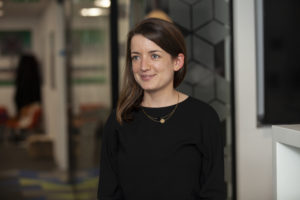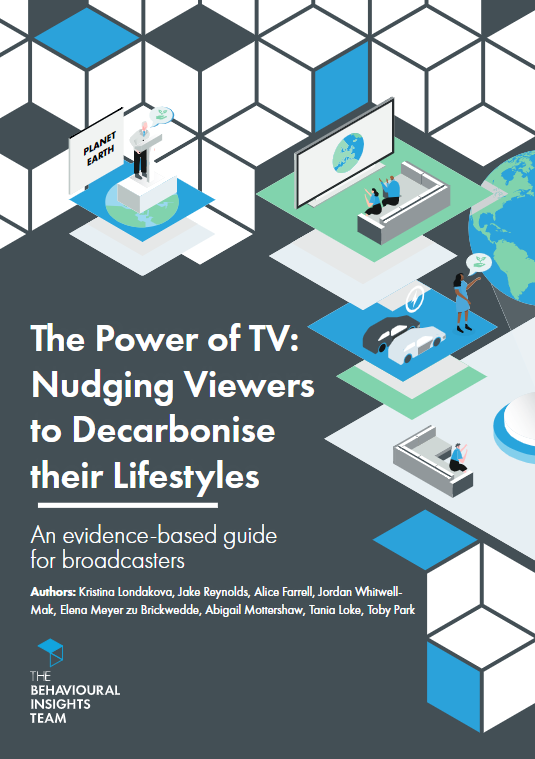At BIT we recognise that the most effective way of reducing the negative environmental impact of our operations is to reduce our carbon footprint. We have made changes to our daily working practices to permanently reduce our footprint such as transitioning many in-person meetings to remote, substantially decreasing our flights and setting lighting to automatically switch off.
In addition to these measures, we now commit to offsetting emissions from our flights and office energy consumption until we are carbon negative.
We understand that offsetting can be a controversial practice, but we believe that offsetting emissions is a useful secondary activity to account for emissions that we cannot reduce at this time.
We think corporations should offset their greenhouse gas emissions
The impact (‘additionality’) of carbon offset schemes
Carbon offsets are controversial because people worry that many programmes might not actually have an impact – many reductions would have happened anyway, and therefore aren’t ‘additional’. We agree with this concern.
Many impact evaluations and certification schemes of carbon offsetting seem low-quality. We have therefore been selective in the projects we have chosen to fund. We looked for projects based on two criteria:
- Good evidence of impact (additionality)
- Evidence of ‘co-benefits’ – benefits to the environment and/or local community above and beyond the reduction in CO2e.
Moral licensing
A related argument against offsets is that they provide corporations and employees with ‘moral licence’ to keep causing emissions. Yet because their real impact is uncertain, that moral licence is unfounded – and so, the argument goes, ultimately a company’s total emissions with offsets are higher than they would have been without them.
We are somewhat persuaded by this logic. We agree that when this is the case, offsets are bad, and that it can be hard to find offsets whose additionality one can be confident about. However, we question whether procuring offsets really increases the extent to which organisations allow their emissions to continue unabated.
In BIT’s case, we are trying to reduce the greenhouse gas emissions our company’s operations cause, and offsetting the emissions from remaining flights and office energy consumption.
Crowding in or crowding out?
Ultimately, we think this debate comes down to a classic behavioural question: Does a small action (procuring offsets) crowd in or crowd out a larger action (reducing one’s carbon footprint)? Critics worry about crowding out. But we’re optimistic that our commitment to offset our emissions may crowd in emissions reduction, for at least two reasons:
- Offset procurement effectively puts an internal price on greenhouse gas emissions, raising their cost to the business (or to clients who might ask us to take a flight to meet with them).
- Offset procurement creates a yearly reminder of our carbon footprint, when we communicate it internally to employees and externally to the public.
BIT’s footprint
Speaking of which, here is BIT’s global carbon footprint from flights and office energy usage, as best as we’ve been able to calculate it for the year April 2021 – March 2022. Last year featured little international travel due to the pandemic so emissions from flights may be higher in future – however, we hope to find a ‘new normal’ that involves more remote collaboration with colleagues and our partners and fewer flights.
| Category | Tonnes CO2e |
| Total emissions | 55.9 |
| UK transport (mostly flights) | 14.6 |
| UK electricity consumption | 17.9 |
| Other offices transport (mostly flights) | 11.4 |
| Other offices’ electricity consumption | 12 |
We have also committed to publishing our annual Carbon Reduction Plan for our UK operations on our website.
What we’re doing
As an organisation with evidence generation at its heart, we have done our best to choose offset organisations with strong evidence pointing towards high quality offsets. The two offset organisations we have chosen are:
- ACES, which protect blue carbon ecosystems in Southern Kenya
- Tradewater, which identifies and destroys refrigerants
The Association for Coastal Ecosystem Services (ACES) runs two community led programmes prioritising the conservation of mangroves and seagrasses – Mikoko Pamoja and Vanga Blue Forest. Mangroves and seagrass are ‘blue carbon’ ecosystems, characterised by their capacity to store large amounts of organic carbon relative to their size. Blue carbon is carbon stored in coastal and marine ecosystems.
- Mikoko Pamoja prevents deforestation of the local mangrove forest and pays for community-based reforestation. In addition, the project pays for some community development projects – such as the provision of school books, construction of school buildings, and the provision of clean water.
- Vanga Blue Forest launched in 2019 and operates in the same way as the Mikoko Pamoja project, protecting 460 hectares of mangroves in the area and incorporating 9000 people from 3 local villages in the project.
Tradewater collects, controls, and destroys fluorinated refrigerant gases so that they do not leak into the atmosphere. In doing so, Tradewater has prevented the release of more than 4,000,000 tons of CO2e so far. Chlorofluorocarbon refrigerants (CFCs) have up to 10,900 times more warming potential than CO2. Given their strong warming potential and relative cheapness to eliminate, Project Drawdown, an evaluator of climate change solutions, ranks controlling and eliminating fluorinated refrigerant gases as a very high-priority tool to reducing global warming.
We have very high confidence in the additionality of Tradewater’s offsets. The refrigerants Tradewater destroys would continue causing global warming if Tradewater did not act, and once they destroy the refrigerant it is gone forever.
We also believe that offsets to Tradewater will cause Tradewater to expand and destroy more refrigerants, as there are few organisations that exist to combat refrigerant production and usage, and Tradewater explicitly promises to reinvest revenue into new refrigerant destruction.
Why two offset projects?
We see ACES and Tradewater as extremely strong performers in two different classes of carbon offsets.
Mikoko Pamoja influences land use – protecting forests that sequester massive amounts of CO2e. In addition to this climate benefit, this project has various important ‘co-benefits’ – protecting biodiversity living in the mangrove forests, reducing coastal erosion and thus increasing resilience to flooding and other natural disasters for the local communities, and directly benefiting the local community through associated development projects.
At the same time, we have somewhat lower confidence in additionality with Mikoko Pamoja than we do with Tradewater. Mikoko Pamoja takes steps through its certification and project governance to guard against non-additionality, but all land use projects suffer, at least to some extent, from two almost unanswerable questions. First, could the protection of this forest cause deforestation elsewhere? Second, could this land eventually be deforested?
We see Tradewater as having a complementary profile. Giving Green, an initiative of IDInsight inspired by GiveWell to help individuals and companies reduce their carbon footprint and environmental impact in an evidence-based manner, has listed Tradewater as the best overall carbon offsetting project, based on metrics tracking additionality. At the same time, there are few or no co-benefits to destroying refrigerants.
Examining the two projects’ additionality and co-benefits
| Mikoko Pamoja | Tradewater | |
| Additionality | Good – Revenue from offsets will allow Mikoko Pamoja to expand their forest protection efforts; and their location specificity creates a higher chance that the protection really is additional and will be permanent. | Excellent – Revenue from offsets will allow further refrigerant destruction. Refrigerant destruction would not happen without Tradewater’s (or similar companies’) efforts. |
| Co-benefits | High – mangrove forests have large biodiversity benefits, and Mikoko Pamoja specifically provides further community-level co-benefits. | No significant co-benefits |
Ultimately, we believe the two offset projects we’ve chosen to work with are incredible enterprises, and offset sales are one of their only credible revenue sources. We’re proud to support their innovation. At the same time, we will continue to reduce our own footprint – striving towards achieving an operational model where we no longer have to offset any carbon emissions.









